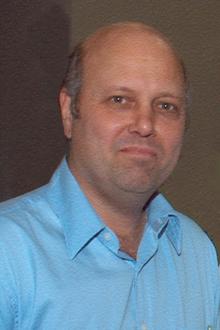The high cost of high-frequency trading
On May 6, 2010, the Dow Jones Industrial Average plunged nearly 600 points in five frantic minutes only to regain most of that loss minutes later. The origin of the so-called Flash Crash remains a mystery to this day, but David Lesmond, associate professor of finance at the A. B. Freeman School of Business, has a strong suspicion of the underlying cause: high-frequency trading.
“These high-frequency traders are hitting the market with such rapidity that the markets have to react to them,” says Lesmond, who has been studying the phenomenon for the past three years. “Then other algorithms take over and they sell as well, so you see a contagion effect.”

High-frequency traders utilize powerful computers and complex algorithms to take advantage of slight price imbalances in the market. HFT firms typically place thousands of orders too small to appear in the consolidated feed of stock transactions, enabling the traders to fly under the radar of Wall Street and quietly gather information about the market. The vast majority of those orders — up to 98 percent — are never executed. Instead, they’re placed solely to probe the market and then cancelled within the blink of an eye. If a market maker tries to fill an order, the high-frequency trader might conclude that a large buyer is present and quickly purchase shares to sell back to the buyer at a slightly higher price. Speed is everything.
“It's gotten to the point that the high-frequency traders worry about the length of cord that connects the computers,” Lesmond says. “You’re thinking milliseconds at this point.”
While supporters argue that high-frequency traders reduce transaction costs and provide liquidity to the market, Lesmond has a different perspective.
“It’s price manipulation,” Lesmond says. “That’s the principal worry that everybody has about these high-frequency traders. Because if the price doesn’t reflect information, you have no transparency in the market, and if you don’t have transparency in the market, who gets the short end of the stick? The investors.”
According to some estimates, high-frequency trading comprises about 70 percent of all equities trading volume, but Lesmond says it’s difficult to quantify the volume because those trades don’t appear on the consolidated feed of stock transactions. As part of his current research, Lesmond hopes to generate a more accurate estimate of HFT volume and also get a clearer picture of its effects on the market, including whether or not the prices high-frequency traders buy and sell at reflect information.
“My feeling is that the prices do not reflect information in the market, and that’s just catastrophic,” Lesmond says. “If prices can be dictated by these off-exchange things, then we have no hope. That’s by definition what market manipulation is.”
Steps may already be underway to address the problem. Reuters recently reported that U.S. equities markets and regulators have agreed to add trades of less than 100 shares, referred to as odd lot trades, to a feed of real-time market data in an effort to boost transparency.
But according to Lesmond, the real source of the problem remains the low cost of trading. In the wake of the stock market’s conversion to decimalization in 2001, bid/ask spreads dropped to a penny or less, essentially eliminating cost barriers to trading. High-frequency trading, Lesmond says, was an unintended consequence of the conversion.
Regulators are now considering a tax to be placed on each order to force high-frequency traders to incur some cost for their activities, a reform that Lesmond says could greatly reduce their negative impacts on the market.
“I think regulators mostly want to inhibit high-frequency traders from submitting false trades—the trades that are submitted and then immediately retracted,” says Lesmond. “By instituting a tax on trades, however small, they hope to lessen the frequency of trade and that in turn may help stabilize the market, not to mention government coffers.”
Interested in advancing your education and/or career? Learn more about Freeman’s wide range of graduate and undergraduate programs. Find the right program for you.
Other Related Articles
- Research Notes: Matthew Higgins
- Fast Company: Are we in a K-shaped economy? Delayed employment numbers could reveal recession odds
- New Goldring Institute director hopes to expand international partnerships
- New study shows how personal profiles transform social media customer service
- Research Notes: Shuhua Sun
- Newsweek: The Real Cost of Layoffs Isn’t In the Financials
- Conference explores opportunities in alternative investments
- Research Notes: Yang Pan
